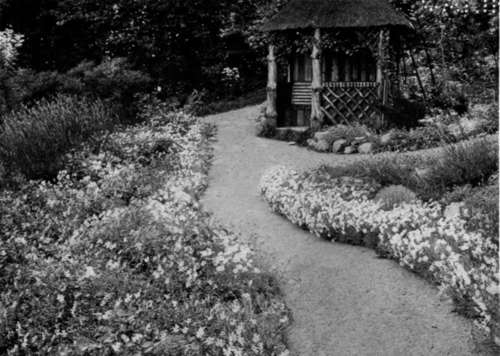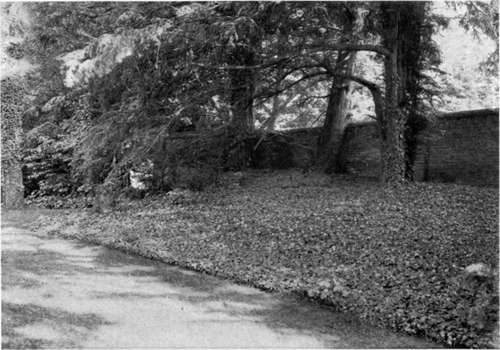Permanent Edgings
Description
This section is from the book "What England Can Teach Us About Gardening", by Wilhelm Miller. Also available from Amazon: What England Can Teach Us About Gardening.
Permanent Edgings
If you can satisfy all the conditions, box will preserve the design for many human generations, but if not, the only permanent materials are "dead edgings," such as stone, brick, or tile. I saw all sorts of abominations in England that we never dream of — ornate tiles, fancy bricks, and even cast-iron intricate patterns. They were always getting out of plumb or being cracked by frost and I cannot understand why any one ever invented them or ever found a purchaser. They are supposed to save the expense of trimming box but their first cost is heavy and some of them have to be carefully set in cement. Heaven defend us from their hard lines and glaring colours and intricate ornamentation! The motive behind all this tawdry art is display, whereas the only sensible object of a dead edging is to save labour in weeding, by sharply defining the walks.

WHITE PINKS ARE PERHAPS THE BEST FLOWERS FOR EDGING. THEY ARE COVERED WITH FRAGRANT FLOWERS IN JUNE AND THE SILVERY FOLIAGE IS ALWAYS ATTRACTIVE, EVEN IN WINTER. MAJOR ROGERS, RIVERHILL, SEVENOAKS, KENT. {See page 281).

WE CAN USE ENGLISH IVY AS A GROUND COVER IN THE NORTH WHERE IT WILL NOT THRIVE AS A CLIMBER ON ACCOUNT OF ITS SUSCEPTIBILITY TO INJURY FROM THE WINTER SUN. IT IS ALSO SOMETIMES USED FOR EDGING BEDS. WATERING BURY, KENT. See page 283.
The only dead edging that pleased me in England was natural stone. In some princely gardens I saw stone copings elaborated by skilled workmen into designs of rare beauty, but I heard sorrowful tales of their chipping and splitting from the action of frost. But the best effect came from using rough-dressed stone of the neighbourhood, setting the blocks in a fairly straight line, but without bothering to make all the blocks the same length. In the moist, cool climate of England lichens and algae soon obscure the marks of the chisel, and the chinks are filled with precious little flowers like the wall pepper, the Minorca sandwort, Kenilworth ivy, etc., which bring the stone into a natural and loving relation with the soil. And the prettiest feature of all is to see these stones overgrown by some live edging, such as stonecrop, thyme, or bell-flower. This type of edging is the one approved by William Robinson, and in describing it I have used many of his ideas and phrases.
Continue to:
Tags
garden, flowers, plants, England, effects, foliage, gardening
